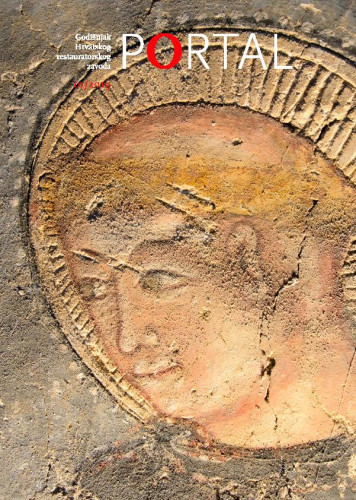Sakristijski ormar iz Kaštel Lukšića jedan je od najljepših sačuvanih primjera primijenjenog umjetničkog drvorezbarstva profanog karaktera u Dalmaciji. Trodijelni ormar monumentalnih je dimenzija, arhitektonskog tipa, a kvalitetom obrade ističe se bogato rezbareno krunište na kojem se nalaze dva groteskna lica maskerona, kao i listovi akantusa koji se isprepliću s volutnim ukrasima. Izradio ga je nepoznati majstor, najvjerojatnije sredinom 17. stoljeća. Izvorno je bio profanog karaktera, a poslije je korišten kao sakristijski ormar. Ormar je nađen u sakristiji stare župne crkve Blažene Djevice Marije u Kaštel Lukšiću, ali to nije njegovo izvorno mjesto. U tekstu su predstavljeni konzervatorsko-restauratorski radovi obavljeni u svrhu usklađivanja stabilnosti i prezentabilnosti s maksimalnim očuvanjem povijesnih slojeva. S obzirom na zatečeno stanje ormara, kao i na višeslojne povijesne tragove koje smo odlučili sačuvati i prezentirati, to nije bio nimalo jednostavan zadatak. Iznesen je i razvoj idejnog koncepta obnove, a navode se i misli filozofa i teoretičara konzerviranja i restauriranja, koje su nam bile svojevrsna inspiracija u nastojanju da provedemo optimalnu konzervatorsko-restauratorsku valorizaciju.; This paper presents the conservation of a 17th century cabinet from the old parish church of the Blessed Virgin Mary in Kaštel Lukšić. In addition to the usual description of the work that is carried out, we have tried to explain why we had to re-examine our approach to valorisation of conservation and restoration. We tried to view this item not only in the context of conservation, restoration and art history, but also in a broader context, which has helped us identify clues and answers that are found on this item. No one can guess what questions will be asked in the future; and, with that in mind, we have devised a plan of reconstruction aimed at presenting the dual historical significance of this item. Furniture, perhaps unlike any other item, tells us about the lives of the people who used it, as well as the spaces in which it was placed. The cabinet from Kaštel Lukšić is one of the most beautiful examples of secular wood carving in Dalmatia, and even Croatia. The architectural three-piece cabinet of monumental dimensions has a quality of workmanship that stands out because of its richly carved crown, which houses two stylized ‘mascaron’ faces along with acanthus leaves intertwined with spirals. It was made by an unknown master in mid 17th century. Originally, it had a secular character, but later it was converted into a sacristy cabinet.
Sažetak

 Portal : godišnjak Hrvatskog restauratorskog zavoda : 10(2019) / glavna urednica Ksenija Škarić.
Portal : godišnjak Hrvatskog restauratorskog zavoda : 10(2019) / glavna urednica Ksenija Škarić.